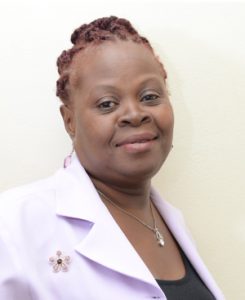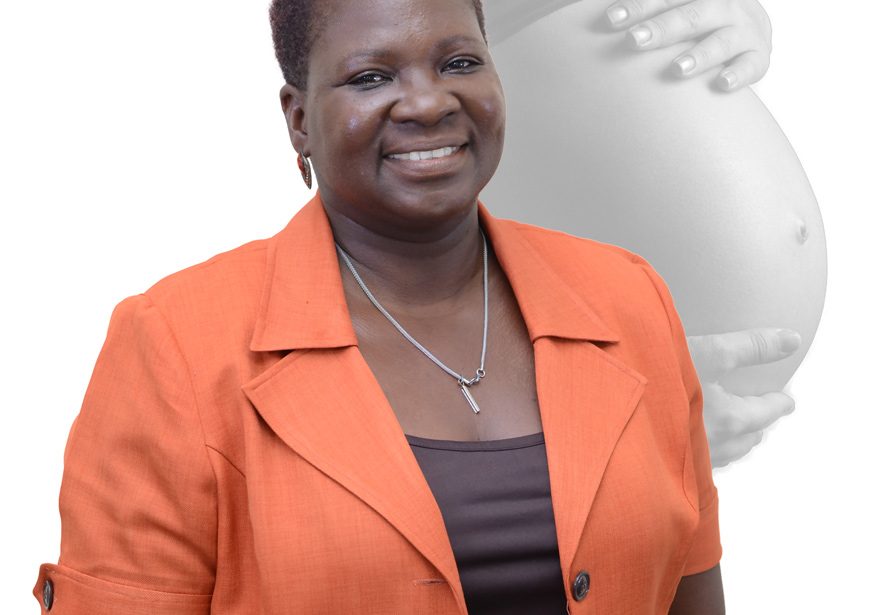Pregnancy can be one of the most exciting periods for an expectant mother — and one of the most challenging.
The barrage of information is overwhelming, and the different choices for healthcare can be confusing. This is where the midwife’s role comes in.
It is a common assumption that all a midwife does is ‘help deliver babies’, but this is not the case.
As President of the Trinidad and Tobago Association of Midwives (TTAM) Arlene James Euin explains, the midwife is a specialised role that is responsible for providing care and supporting the entire family pre-conceptually, during pregnancy, throughout labour, and in the early postnatal period.
The expert on normal vaginal birthsThe midwife is the expert on normal vaginal births, and is recognised throughout the world as the most appropriate maternity care provider for most women.
She carries out clinical examinations, provides health and parent education, supports the mother through the childbearing process, and also works in partnership with other healthcare practitioners and social services to meet individual needs.
“It is a very different relationship from that of a doctor or a nurse,” Arlene says. “A midwife is with you from the beginning, up to and beyond the end — she becomes almost part of the family.”
T&T Association of Midwives
Fate led Arlene to the field of nursing, and later to the specialised focus on midwifery.
“I had applied to become a teacher, but wasn’t able to begin at that time. I got through to the nursing programme, and loved it. I was working in the operating theatre as a scrub nurse, when I became exposed to and interested in the independent practice of midwifery. Ironically, now, as a midwife, I am teaching!” she says, laughing.
Education lies at the core of the Trinidad and Tobago Association of Midwives.
Redefining the role of the midwifeEstablished in 1995 under the auspices of the Trinidad and Tobago Registered Nurses Association, TTAM strives to promote and advance the art and the science of midwifery, redefining the role of the midwife to enhance the professional status and image of its members.
It is a self-funded non-governmental organisation (NGO), and aims to be the premier organisation for midwives and key source of current and evidence-based information. TTAM’s membership, which currently stands at around 160 members, comprises of those in public practice, private practice, and also independent practitioners.

“Through the linkages we make throughout the region and the world, we are striving to raise the calibre of midwifery,” says Marcia Rollock, the Public Relations Officer of TTAM, who also presides over the Caribbean Regional Midwives Association (CRMA), which was established in 2012.
Put midwifery on the world stageContinuing education for members is provided through access to international seminars and scholarship/research opportunities with overseas sister organisations such as The International Confederation of Midwives (ICM), American College of Nurse Midwives (ACNM), and the Royal College of Midwives (RCM).
She adds: “Our objective is to put midwifery on the world stage, and make it recognised and respected in its own right.”
Nursing vs. Midwifery
Although there is some crossover between the roles of the nurse and the midwife — and Arlene and Marcia are also Registered Nurses themselves — the key purpose of TTAM is to focus specifically on midwifery matters, and promote the importance of the field as an independent profession.
You can be a midwife without ever having been a nurse“Some people take ‘midwife’ it to mean the same as a nurse, which is not the case,” Arlene says. “Nurses focus on illness; midwives focus on wellness and the care of women having normal births. You can be a midwife without ever having been a nurse.”
Marcia clarifies further: “A midwife is granted a license by the State to practice independently. This means she can set up a business at her own home, if she so chooses.”
For the expectant mother, the primary difference in terms of care would be the frequency of contact and the type of contact, as the relationship with a midwife is more thorough and personalised.
Another key aspect of the midwifery profession is the community role: educating the public on the importance of continuous proactive health care, community lectures and counselling of adolescents.

Some of the community education lectures and seminars held by TTAM include:
- Pre-conception care
- Antenatal care
- Intranatal care
- Family planning
- Infant care and nutrition
- Baby massage
To ensure competency and currency of knowledge for their members, regular updates are also provided for members at their annual conference in September on:
- Midwifery Competencies
- Leadership and Management
- Obstetric Emergencies
- Research Methodology
- Neonatal Resuscitation
- Contraceptive Technology/Taking of pap smears
Through education and community-building for both the public and those in the profession, the Association implements preventative measures to decrease problems during childbirth and ensure safe motherhood for all women.
Education, Regulation & Association
Education, Regulation and Association are the watchwords of TTAM, and outline the umbrella focus for all their initiatives.
Making the steps to change the future“Through Education, we are imparting knowledge to the professionals and to the public; through Regulation we are making the steps to change the future of the profession; and through Association we are partnering to share the knowledge and to make the change,” Arlene says.
One of the changes she would like to see is an improvement in the level of education for midwives in Trinidad and Tobago.
A TTAM contingent including Arlene and Marcia has recently returned from an International Confederation of Midwives (ICM) Conference in the Czech Republic. Approximately 3,500 midwives from all over the world attended. Three (3) members had the opportunity to present research findings, and Ms. Marcia Rollock also presented on the importance of competency-based education in the field of midwifery.
We would really like to see a Master’s degree in midwifery“We would really like to see a Master’s degree in midwifery being offered here in Trinidad and Tobago,” notes Marcia. “For those interested in midwifery, there is a direct-entry programme after one leaves school, or one can become a nurse first and then do additional courses to specialise in midwifery.”
The Midwifery programme is offered by the Ministry of Tertiary Education and Skills Training, with the Nursing Council of Trinidad and Tobago in charge of the syllabus of training, curriculum, examinations and registrations. The School is affiliated with the major teaching hospitals in North and South Trinidad, where students are assigned to develop their clinical competencies.
Public perception that midwives are a thing of the past
Marcia and Arlene would like to see the field elevated to include a separate Bachelor’s and Master’s degree for Midwifery, as it is treated in some other countries around the world.
“There is still a public perception that midwives are a thing of the past, or only exist in remote communities,” says Arlene.
“By having the skills and training available at more tertiary education institutions, and on par with other fields at degree level, we can begin to bridge that gap and change that perception, which is important for the public as well as aspiring professionals.”
Further Information
- It is a myth that a woman should only use a midwife after she has had her first child. A midwife is a licensed practitioner, and is trained to see early signs of problems, which can occur regardless of how many children the woman has given birth to. Even if it is your first child, you can use the services of a midwife.
- If problems occur along the course of the pregnancy, the midwife will refer to an obstetrician. Remember, a midwife is the expert in NORMAL maternity care — most women (75%-80%) have normal pregnancy and labour. The obstetrician, an expert in his/her own right, is responsible for ABNORMAL pregnancy and labour, and will be contacted by the midwife only if and when the need arises. Even then, in most cases the midwife will continue to work alongside the obstetrician as part of the woman’s health care team.
- If you would like to seek the care of a midwife, you can contact TTAM directly to discuss your needs. You can also ask your doctor for a recommendation.
- If you are a midwife interested in joining TTAM, registration forms can be obtained from TTAM members, Maternity Departments at Port of Spain General Hospital, San Fernando General Hospital, Sangre Grande District Hospital, Tobago Regional Hospital and Mt. Hope Women’s Hospital.

